Maximizing LED display visibility: brightness, pixel pitch, and scheduling best practices
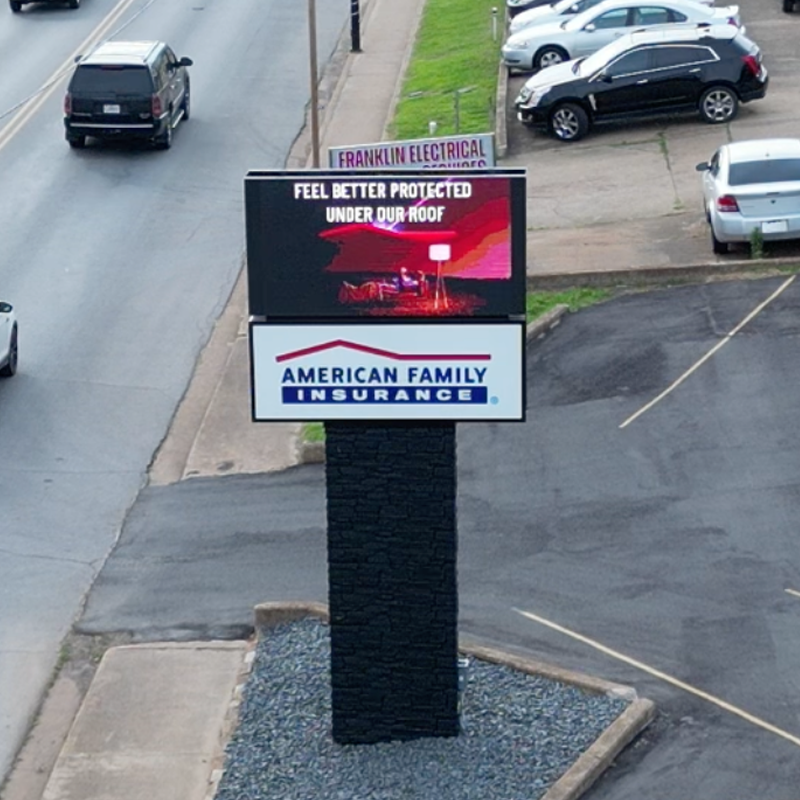
LED displays only work when people can clearly see and absorb their messages. Whether outdoors in bright daylight or indoors at an event, visibility is the single factor that determines impact. Brightness, pixel pitch, and scheduling all influence how effectively an LED display communicates. Getting these elements right ensures your investment produces real results. How bright should an LED display be for outdoor viewing? Brightness is measured in NITs, or candelas per square meter. Outdoor LED signs need to overcome direct sunlight to remain visible. Industry standards recommend 5,000–7,000 nits for outdoor displays, while 1,200 to 4,000 NITs is usually sufficient indoors. Automatic brightness controls are also valuable, adjusting output based on ambient light conditions. Displays that are too dim disappear in daylight, while signs that are overly bright at night can cause glare or eye fatigue. How does pixel pitch relate to the optimal viewing distance for an LED display? Pixel pitch describes the distance between the centers of two adjacent pixels. The smaller the pitch, the higher the resolution. A simple calculation helps: Viewing distance ≈ Pixel pitch (in mm) × 8–10 feet. For example, a 10mm pixel pitch is best viewed from 80–100 feet away. Outdoor signs, seen from a distance, often use larger pixel pitches (10mm–16mm), while indoor video walls use tighter pitches (1.5mm–4mm) for crisp visuals at closer ranges. Choosing the right pixel pitch ensures clarity without unnecessary cost. What is the recommended pixel pitch for an indoor LED screen? Indoor LED displays benefit from tighter pixel pitches because viewers stand closer. 2.5mm–3.9mm pitches are common in retail, hospitality, and corporate settings, allowing for sharp, high-resolution imagery. For immersive video walls or boardrooms, 1.2mm–1.9mm pitches deliver exceptional detail. Selecting the right pixel pitch balances budget with visual performance. What are the best practices for scheduling content to maximize LED display impact? Even the brightest display with perfect resolution loses effectiveness if the content isn’t timed well. Scheduling best practices include: Match timing to audience flow. Highlight promotions during rush hours, school traffic, or evening commutes. Rotate messages every 6–8 seconds. Viewers only have a moment to absorb your content. Prioritize high-contrast visuals. Use bold fonts, bright colors, and simple graphics that can be understood quickly. Daypart scheduling. Display coffee ads in the morning, dinner specials in the evening, or seasonal messages at appropriate times. Effective scheduling ensures the right message hits the right audience at the right moment. How can I prevent glare from reducing the visibility of my LED display? Glare is one of the most common visibility problems. It can be minimized by: Positioning the display away from direct sunlight angles. Using displays with anti-glare coatings or louvers. Employing brightness sensors to automatically adjust levels. Choosing solid-state engineered signs that maintain uniform brightness. These measures keep content legible in all conditions. Maximizing visibility requires the right balance of brightness, pixel pitch, and scheduling. When all three factors align, your LED display delivers stronger impressions, more engagement, and higher ROI. NEXT LED Signs builds displays engineered for clarity and reliability in every environment. Contact us today to start your project. How Next LED Signs Can Help Visibility isn’t guesswork—it’s engineering and timing. NEXT LED Signs designs LED displays for clear, reliable viewing in every condition. We right-size brightness, specify the correct pixel pitch, and program daypart schedules that match your traffic. Need an expert plan for your location? Request a site rendering and content schedule today. Let’s build a display that gets seen and remembered.. Contact Next LED Signs today FAQs: Does going brighter always improve outdoor LED visibility?Not necessarily. While outdoor LED displays typically need 5,000–8,000 nits (and sometimes over 10,000 nits in direct sunlight) pushing brightness too high has diminishing returns. It increases power consumption, generates heat, and can shorten LED lifespan. Efficiency — measured as nits-per-watt — is now a key performance metric in premium outdoor displays. What viewing distance should you plan around for a given pixel pitch?One commonly used rule is 1 mm pixel pitch ≈ 8 feet of optimal viewing distance. Another heuristic: multiply the pixel pitch in mm by 10 to get the recommended viewing distance in feet. For example: A 2 mm pitch → ~20 ft A 10 mm pitch → ~100 ft These are guidelines. For sharper control, use the “visual acuity distance” method (pixel pitch × 3438 → result in mm) to determine when viewers stop distinguishing individual pixels. How do I time or rotate LED content so it’s not ignored?Studies in digital signage behavior suggest that message rotation intervals of 6–10 seconds tend to maximize attention before the viewer’s gaze shifts Also, dayparting content (e.g. breakfast promos in the morning, events in the evening) increases relevance. Pair that with sensors or data on foot-traffic peaks to align your highest-priority ads with the busiest times. What pixel pitch works best for indoor LED applications like boardrooms or retail walls?Indoor settings demand finer pitches because viewers are closer. The sweet spot is often 1.5 mm – 4 mm depending on room size and viewer distance. Displays with pitches below 2 mm are common for premium video walls in lobbies or control rooms. But pushing below what your audience can perceptually distinguish can be wasted cost. What strategies help reduce glare or reflection on LED displays?A few proven tactics: Use anti-glare coatings or louvers to block oblique sunlight. Position displays to avoid direct alignment with the sun’s path. Deploy ambient light sensors to auto-adjust brightness and prevent wash-out. Opt for higher contrast settings, which help text and shapes punch through reflection.While I didn’t find a precise peer-reviewed stat on glare reduction percentage, many high-end LED systems incorporate these features as standard for outdoor viability.
How to Enhance Guest Experiences with Digital Signs for Your Hotel or Resort
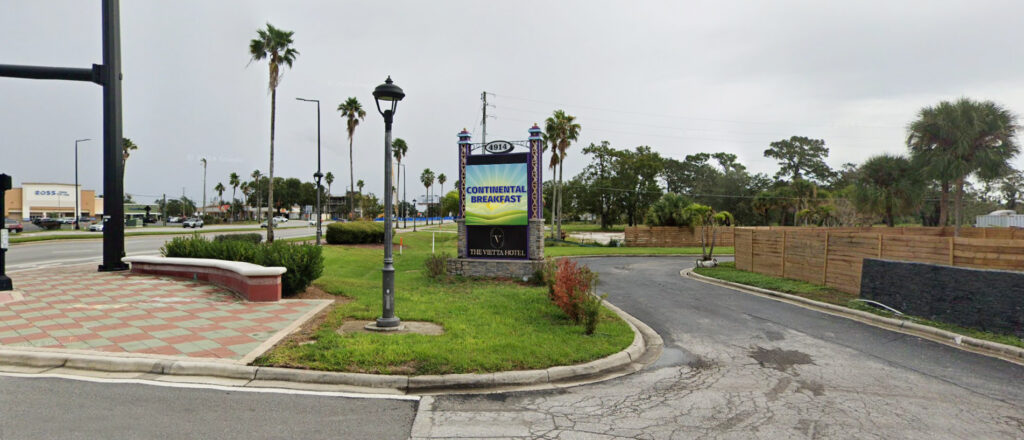
In the hospitality industry, guest experience isn’t just a nice extra—it’s a competitive differentiator. When digital signage in hotels and resorts is done right, it elevates first impressions, cuts friction, and delivers upsell opportunities. Done poorly, it can feel gimmicky. Here’s how to use hotel digital signage solutions, resort LED displays, and interactive guest signage to make your property feel premium, modern, and guest-focused. https://youtu.be/0rlPUWyYmE4 Why use LED signage in hotels? LED displays draw eyes to dynamic content and help you communicate at the speed of operations: welcome messages, live event updates, weather, shuttle times, and on-property offers. Because motion and brightness grab attention far more than paper posters, LED content is remembered longer—83% recall rate. What is digital signage in hotels? Hotel digital signage is a network of indoor LED displays, menu boards, lobby screens, room-adjacent panels, and interactive kiosks driven by a CMS. It lets teams schedule content by location and daypart (lobby vs. elevators vs. F&B), push emergency notices, and localize creatives by guest segment—all without reprinting anything. How can digital signage improve the guest experience in hotels? Clear, timely information reduces confusion and creates a polished arrival. Guests notice it: around 70% of hotel guests find on-property digital displays engaging or entertaining, which helps messages land without adding friction. When paired with wayfinding and timely updates, signage smooths movement through large properties and sets a modern tone. What are some innovative uses of digital signage in hotels? Interactive guest signage at concierge stations for local recommendations and live maps In-room LED displays for on-property promos, spa appointments, and late checkout offers Event & conference boards with live agenda changes, speaker profiles, and room changes LED video walls in lobbies to anchor brand storytelling and drive footfall into F&B What are the benefits of using digital signage in hotels? Practical wins include faster communication, fewer printing cycles, and data-driven creative rotation. On the revenue side, screens can influence buying behavior—19% of consumers report making an impulse purchase after seeing a digital ad—and strong visual recall supports upsell visibility across touchpoints. How can digital signage help with hotel operations? Operationally, screens become your live bulletin board. Teams can change check-in guidance, route guests around closures, and surface shuttle updates or weather alerts instantly. With self-service touchpoints rising, travelers increasingly expect tech-assisted journeys: 70% of U.S. travelers are likely to check themselves in via an app or kiosk rather than at a traditional front desk. How can hotels use digital signs for marketing? Use dayparted content and location-aware placement: breakfast promos in the morning; spa/amenity packages in the afternoon; bar specials and entertainment after 5 p.m. For reference, in retail settings, 19% of consumers say digital signage prompted an impulse purchase—so bringing similar logic to on-property F&B and experience promotions makes sense. How can hotels use digital signs to reduce queues? Pair queue-adjacent screens with “what to expect” steps, mobile check-in QR codes, and wayfinding alternatives (e.g. where to drop bags or pick up keys). Self-service adoption is rising—70% of U.S. travelers prefer app/kiosk check-in. Signage acts as a bridge, keeping lines moving and giving options. Why NEXT LED Signs Belongs in Your Plan Great content deserves excellent hardware. NEXT LED Signs builds indoor and outdoor LED displays designed for hospitality—bright, durable, and reliably legible. Our programmable LED signage platform makes content updates seamless. With in-stock inventory and fast shipping, NEXT LED Signs helps your team deploy guest experience enhancements quickly and confidently. With in-stock inventory, five-day shipping, and strong dealer support, NEXT LED Signs helps hotels and resorts create guest experiences that stand out. Ready to enhance guest satisfaction and revenue at your property? Contact NEXT LED Signs for a free quote. FAQs About Digital Signage in Hospitality What content format drives higher engagement in hotel displays?Combining short video loops, subtle motion, and localized promos tends to outperform static slides; motion attracts attention and helps display content feel fresh. Where should hotels prioritize placing video walls and smaller displays?Video walls are ideal in lobbies and focal gathering areas to anchor the environment; smaller displays perform better in hallways, corridors, and amenity zones for targeted messaging. How often should hotel signage content be refreshed?Refresh content weekly or rotate by daypart (morning, afternoon, evening) to avoid fatigue, and test different creative directions over time for performance. How can hotels quantify ROI from digital signage?Track uplift in service usage, conversion rates near screens, percentage of guests acting on promotions, and compare performance during control vs display periods. Do hotels need interactive kiosks, or will passive signage suffice?Start with strong passive displays to build content consistency; introduce interactive kiosks in zones where guests benefit from deeper engagement—wayfinding, menu lookup, special requests.
LED Signs: A Single Purchase Asset With Multiple Uses
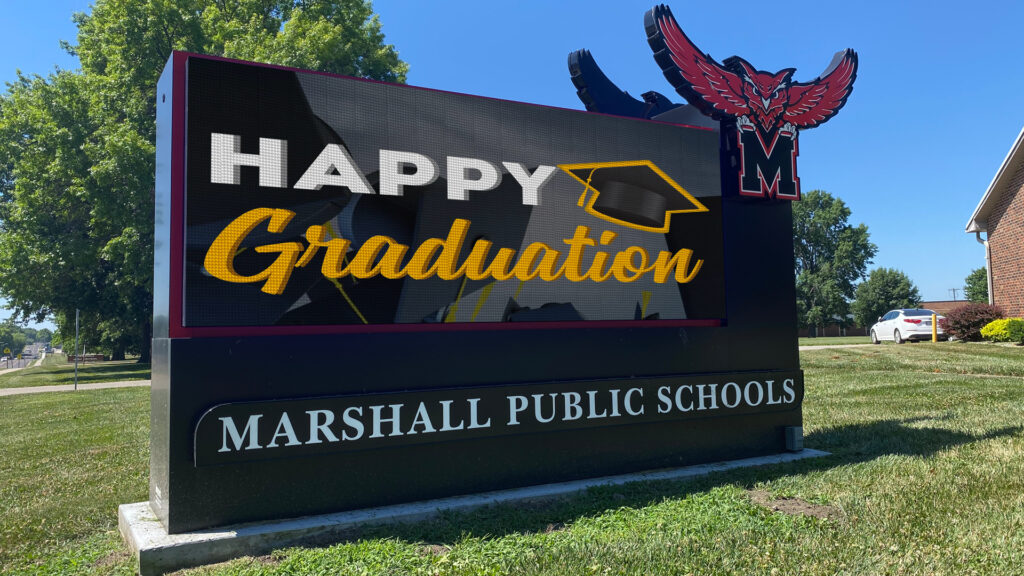
In industries like parking management, the term “single-purchase asset with multiple uses” has become a buzzphrase. It describes an investment that pays off across multiple applications—without recurring purchases. LED signs are a perfect example. Let’s break it down. What Does “Single Purchase, Multiple Uses” Mean? You buy one LED sign, and it serves many purposes: Communicate pricing and availability. Promote sales events in real time. Inform visitors of event schedules, times, and locations Display emergency alerts, weather updates, or public safety messages Promote fundraising efforts or community service drives Broadcast daily inspiration or notices All from one asset investment., Why LED Signs Stand Out Digital displays outperform static signage in reach and impact Digital signage is 47.7% more effective at raising awareness versus traditional static signs It has a 400% higher view rate than non-digital displays 65% of viewers can recall displayed messages after several days And 62% of people who see a public digital sign take action—whether it’s visiting a website, attending an event, or calling a number Who Benefits from One Asset, Many Uses? This isn’t just for churches or municipalities—it applies to any organization where messaging needs shift regularly, and budgets are lean: Parking facilities use one sign to display occupancy, pricing, wayfinding, promotional content, and sponsorship messages. Schools and campuses update event times, emergency alerts, athletic schedules, and registration drives. Municipalities relay weather warnings, senior center activities, public services, and local events. Nonprofits share volunteer opportunities, donation goals, crisis appeals, and community updates. Instead of posters, flyers, or banners, one LED display handles them all. How to Maximize Your Single-Purchase LED Asset Define multiple content zonesReserve sections of the display for different uses—urgent alerts, event countdowns, fundraising goals, and daily messages. Schedule smartlyUse cloud-based software to set content by time or event—morning announcements, evening alerts, weekend events. Refresh frequentlyChange messages daily or weekly to keep the sign relevant and avoid “content fatigue.” Measure effectivenessTrack responses to specific messages—event attendance spikes, donation drive upticks, volunteer sign-ups. This helps you demonstrate objective-based impact. Why This Model Works One investment. Multiple payoffs. Signage that replaces banners, flyers, and announcements. Real-time updates for dynamic needs like emergencies or events. Reusable messaging asset that delivers value year-round. Faster grant justification through measurable engagement metrics. Ready to Build Your Multi-Purpose Sign Asset? At NEXT LED Signs, we specialize in helping organizations purchase and implement signage that does more—without extra cost. Whether it’s a parking garage, a school campus, or a civic center, we’ll help you make one sign deliver maximum utility. Let’s talk about how one sign can do so much more. LED Signs & Single Purchase, Multiple Use Assets How do LED signs support the idea of single purchase, multiple use assets?LED signs are one-time investments that deliver ongoing value. After installation, they can be updated instantly to promote events, share pricing, announce emergencies, and more—without any additional hardware or printing. What types of organizations benefit most from LED signs as multi-use assets?Schools, municipalities, churches, and nonprofits often have diverse communication needs. LED signs help them share announcements, schedules, and fundraising updates from one central platform, making the most of a single purchase. How do LED signs reduce long-term costs for multi-use applications?LED signs replace the need for printed materials, banners, and temporary signage. That means fewer recurring costs for ink, paper, and labor—especially for organizations with tight budgets and frequent messaging changes. Why is message flexibility important in a single purchase LED sign?With just one sign, you can change messages in real time to reflect emergencies, weather alerts, donation drives, and more. This versatility turns LED signs into essential tools for efficient communication across multiple applications.
LED Sign Value Beyond Sales: Understanding ROO
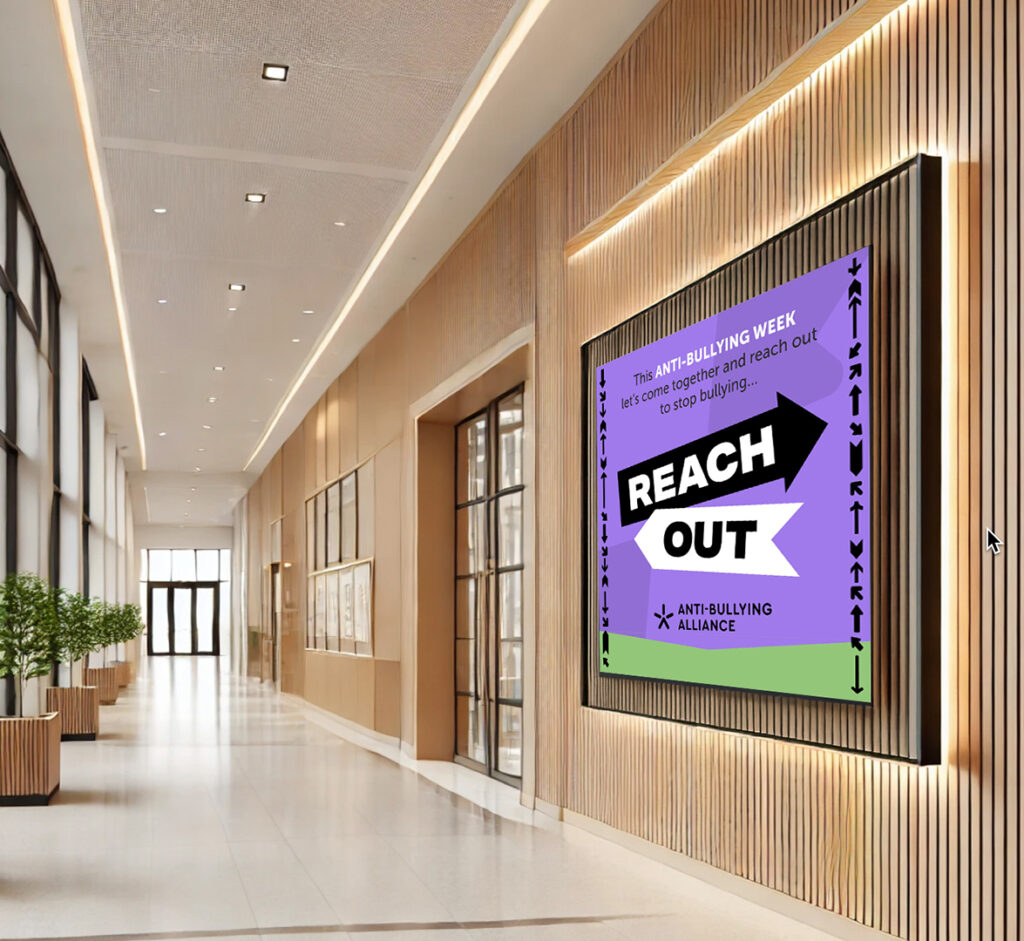
When people talk about marketing results, they often point to ROI—return on investment. But what if you’re not trying to increase sales? What if your goals are outreach, engagement, and visibility? That’s where ROO—Return on Objective—comes in. It’s how municipalities, churches, nonprofits, and community organizations can measure the impact of their LED signs when traditional sales metrics don’t apply. Let’s break down what ROO means, and how LED signs can deliver it. What Is ROO, and Why Does It Matter? ROO focuses on achieving mission-based goals, rather than generating revenue. Think about objectives like: Raising attendance at a local event Increasing voter turnout Growing church membership Promoting emergency resources Boosting volunteer participation These are measurable, meaningful goals—and digital signs can help achieve them faster and more effectively. Visibility = Action In the nonprofit and public sectors, awareness is everything. According to the OAAA, 62% of viewers immediately take action after seeing a digital billboard, and 52% engage in smart actions such as online searches or social media visits. When your LED sign shares a message like “Blood Drive Saturday” or “Cooling Station Now Open,” you’re not just informing passersby—you’re driving real action. That’s ROO in motion. Digital Signs vs. Traditional Outreach Printing flyers or banners takes time, costs money, and quickly becomes outdated. In contrast, digital LED signs: Update in real-time Reach thousands daily Eliminate printing costs Target messages based on time of day or weather Churches, for example, save on weekly bulletins, printed announcements, and seasonal signage—costs that add up fast. Municipalities cut down on the expense of mailing event notices or installing static banners across town. Instead of printing 500 flyers, one digital message can reach an entire community. Timely Messaging Builds Community Trust Speed matters. If your city opens an emergency shelter during a heatwave, there’s no time to wait for mailers. An LED sign shares that information in seconds—keeping people safe and informed. ROO is also about strengthening relationships. When people see their city, school, or church communicating regularly and transparently, trust increases. That’s a value that goes well beyond a dollar figure. Funding Made Easier Through ROO Metrics Many public and nonprofit projects are funded through grants, donations, or budgets that require accountability. Showing that your sign helped increase event attendance by 40% or cut printing costs by $2,000 makes future funding more likely. When you measure your success based on objectives—not profits—you create a clear, compelling story about your organization’s impact. Your Message Matters—Even Without Sales If your goal isn’t sales, that doesn’t mean you don’t need results. It means you need the right kind of results—and LED signs help you get there. Whether you’re a city trying to promote safety alerts, a church welcoming new members, or a nonprofit recruiting volunteers, digital signage is one of the most effective tools for engaging your audience. How Next LED Signs Can Help By regularly assessing the performance and relevance of your digital signage, you ensure that your communication remains effective and your branding stays consistent. With that being said, recognizing these warning signs allows you to make strategic decisions about when to upgrade. As a result, your messaging will remain impactful and aligned with your business objectives. Furthermore, an upgrade can position your business as an industry leader, demonstrating a commitment to innovation and modern technology. Contact Next LED Signs today to explore how LED digital signs can enhance audience engagement and strengthen your brand presence. FAQs: Understanding ROO and LED Signs What is the difference between ROI and ROO?ROI (Return on Investment) tracks profit-based outcomes. ROO (Return on Objective) measures success based on mission-driven goals, such as outreach, awareness, or attendance. Can LED signs really make a measurable difference for nonprofits or churches?Yes. According to studies from the OAAA, digital signs increase message recall and engagement. Many organizations report higher attendance and participation after installing LED signage. What are some examples of ROO for municipalities?Cities may track ROO by measuring increased attendance at public events, reduced reliance on printed materials, or faster dissemination of emergency alerts. How do LED signs help cut costs?LED signs eliminate recurring expenses like printing, shipping, and manual installations of banners or posters. They also reduce staff time spent on traditional communications. Is there data to support the effectiveness of digital signage?Yes. According to Nielsen, 55% of people who see a digital display can recall the message later. That recall rate helps drive community participation and support.
Digital Scoreboards and Sponsor Revenue
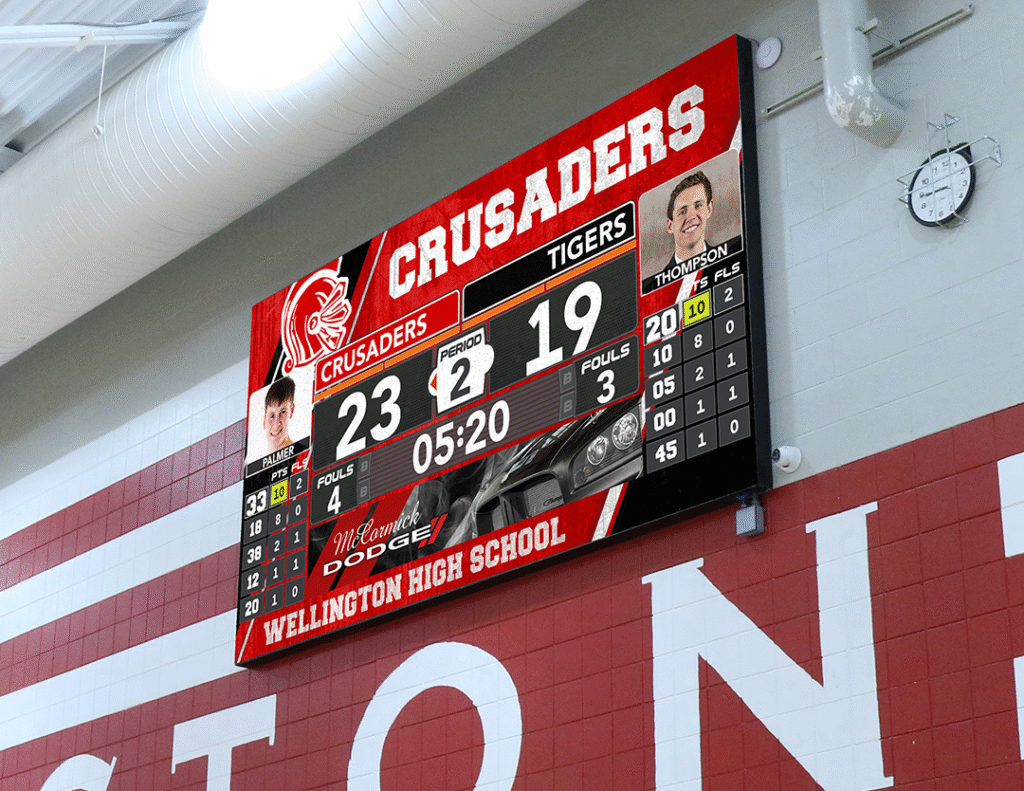
Digital scoreboards are doing way more than just keeping score. For schools, sports venues, and sponsors, they’ve become a major asset—bringing in revenue, creating memorable experiences, and making game day feel like a professional event. Let’s break down how these displays are changing the game—for fans, sponsors, and the bottom line. Scoreboards That Pay for Themselves Forget static signs. Digital scoreboards rotate ads throughout the game, giving multiple sponsors a chance to be seen. It’s not uncommon for a local business to invest $1,000 in scoreboard ads and see over $7,500 in return—that’s a 650% ROI during one high school football season. More ads. Better visibility. More revenue. Fans Stay Engaged—and So Do Sponsors Today’s scoreboards aren’t just digital—they’re interactive. Think live polls, social media shout-outs, sponsor highlights, and instant replays. The more the crowd pays attention, the more valuable those ad slots become. Sponsors love visibility, and fans love being part of the moment. Easy for Schools to Manage Modern LED scoreboard systems come with simple scheduling tools. With drag-and-drop software, schools can easily control what plays when—no technical expertise required. That means sponsor content is displayed right on time and exactly how it’s supposed to be. Real Results: What Schools Are Seeing It’s not just theory—it’s happening. Reports show that 95% of schools recover the cost of their digital scoreboard through sponsorship revenue within 12 months. Many go on to earn more than $10,000 per year just from advertising. Want a scoreboard but don’t have the full budget? Many schools team up with local sponsors who help fund the display in exchange for on-screen branding and exposure at every game. Benefits for Schools and Sponsors For Schools: Revenue Generation: Sponsorships can fund the board and support other programs. Educational Value: Students get hands-on experience managing digital content, video production, and marketing. For Sponsors: Captive Audience: Ads reach local fans who are already engaged and paying attention. Community Support: Associating with local teams builds goodwill and brand loyalty. A Smart Investment for Everyone Digital scoreboards aren’t just about the score—they’re about making every event more exciting and more profitable. Whether you’re a school looking for funding or a sponsor wanting meaningful exposure, LED scoreboards create value on every level. Schools can secure partial funding for their LED video displays through corporate sponsorships, where a brand’s name or logo is prominently displayed, enhancing visibility and community engagement. Key Takeaways Digital scoreboards are more than just a modern replacement for traditional scorekeeping—they’re a strategic asset for revenue generation and community engagement. By offering dynamic advertising opportunities and enhancing the fan experience, they provide significant value to both schools and sponsors. High ROI: Digital scoreboard advertising can yield substantial returns for sponsors. Enhanced Engagement: Interactive features keep fans engaged, increasing ad effectiveness. Operational Efficiency: Modern software simplifies ad management, ensuring timely and accurate displays. For schools and sponsors looking to maximize their impact and revenue, investing in digital scoreboard technology is a game-changing decision. Frequently Asked Questions How much revenue can schools generate with a digital scoreboard?Most schools generate between $10,000 and $25,000 annually through scoreboard sponsorships. In fact, 95% of schools recoup their full investment within the first year, according to customer reports. What makes digital scoreboard advertising so effective for sponsors?Digital displays grab attention with motion, color, and repetition. Studies show that digital signage captures 63% more attention than static signs and boosts brand recall by up to 83%, giving sponsors real visibility in front of a captive audience. Can students help manage the scoreboard and learn from it?Yes. Many schools incorporate scoreboard operations into student-led media programs. This hands-on experience teaches skills in video production, content scheduling, marketing, and even sales—skills that align with real career paths in broadcasting and advertising. Is it hard to manage advertising on a digital scoreboard?Not at all. Today’s systems include drag-and-drop software that lets staff or students manage content with ease. Schools report saving 20–30 hours per season compared to coordinating static signage, thanks to automated scheduling and centralized controls. Do local businesses actually see ROI from scoreboard advertising?Absolutely. A typical local sponsor investing $1,000 can expect returns of $5,000 to $7,500 over a single sports season. That’s a potential 650% return, driven by repeat visibility and strong community engagement. At Next LED Signs, we deliver high-performance digital scoreboards that do more than display scores—they create revenue opportunities. Our vivid, full-color LED displays support dynamic sponsor content, real-time updates, and fan engagement tools that help schools and sports venues turn every game into a revenue-generating event. With easy content management and industry-leading durability, Next LED Signs is your partner in both game-day excitement and long-term financial impact. Contact us today to find out more about how digital scoreboards can generate revenue for your organization.
Leasing a Digital Sign Makes Sense for Churches
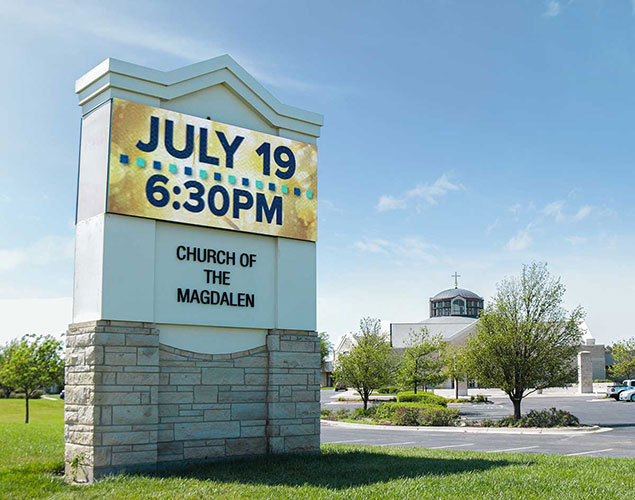
If your church isn’t selling products, how does leasing a digital sign make financial sense? The answer: cost savings, community impact, streamlined outreach, and mission-driven growth. Save on Printing, Flyers & Banners Churches often spend thousands each year on printed materials—bulletins, flyers, banners, and event signage. Industry data shows: Churches can spend up to $6,500 annually on printing and photocopying. Replacing these costs with digital signage can cut that expense by 76% (Source: commercialcopierleasingsouthflorida.com, mvix.com) Beyond cost reduction, digital content updates eliminate manual changes, distribution costs, and waste from outdated posters (Source: trudigital.com, crowntv-us.com) Leasing a sign means you don’t drain reserves or set aside months of fundraising—your operational savings can begin immediately. Make Messages Instant, Flexible & Effective When a response is needed quickly—like for flood relief, community drives, or schedule changes—flyers and banners often arrive too late. Digital signage lets you update messages instantly via cloud-based software Use live donation goal displays, event reminders, scripture quotes, or urgent alerts—all without setup delays or print costs That responsiveness leads to more engagement, stronger outreach, and a more connected congregation. Build Engagement and Grow Your Community Though churches don’t track revenue, growth isn’t measured in dollars—it’s in membership, involvement, and visibility. Digital signage can boost event attendance by as much as 65%, thanks to dynamic visual reminders Over half of worship venues use digital displays to deliver messages or show scripture 70% of Christian Millennials prefer scripture on screens, aligning with modern worship habits The message is clear: a sign isn’t just a cost—it’s a tool for inviting, serving, and strengthening community bonds. Lease to Upgrade Your Reach—Now Leasing makes high-quality signage accessible without long-term strain: Bring in the sign you’ve envisioned without waiting years to fundraise Avoid upfront capital costs—lease terms deliver manageable monthly payments tied to immediate benefit Planning to upgrade later? Leasing lets you pivot smoothly as needs evolve Summary: How a Sign Pays You Back Leasing LED signage for your church helps “pay itself forward” by: Reducing recurring print costs by up to 76% Enabling instant event and fundraising messaging Increasing attendance and engagement—often by more than 65% Delivering immediate ministry impact without waiting for long fundraising campaigns A better message than “signs pay for themselves” in dollars might be: With leasing, your sign starts building ministry value the day it’s installed. What Makes NEXT Different? Churches choose us not just because we sell LED signs—but because we understand what the sign is for. We don’t compete with you or your installer—we work with your team. We offer fast 5-day shipping on in-stock models, which means you don’t wait for months while your project stalls. We walk you through content planning, scheduling, and best practices, so you’re ready from Day 1. And we back it all up with responsive support—real people who understand ministry timelines and small-team needs. Contact us today to find out how you can put digital signs to work for your organization. FAQs About Digital Signs for Churches What savings should a smaller church expect?Even modest bulletins, weekly flyers, and occasional event banners add up. A digital sign could save several thousand dollars annually in print costs alone. Will congregants engage with screen-based messages?Yes—especially younger members. Many churches report higher attendance and donation participation when they use dynamic signs. Is updating the sign complicated?Not at all. NEXT LED Signs uses cloud-based software accessible from any device. Updates are instant and require no physical effort. What if I want a basic sign now and upgrade later?That’s exactly the advantage of leasing: access to entry-level signs now, with upgrade options available when your needs grow.
Digital Church Signs for Every Budget
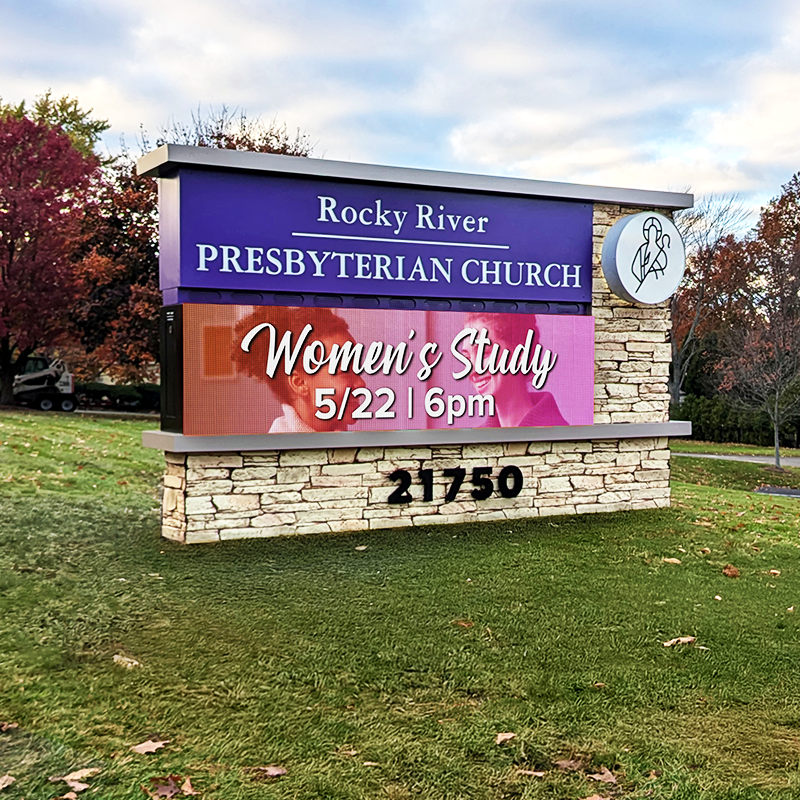
Not every church has a mega-ministry budget—and that’s okay. Whether you’re in a small rural parish or growing urban congregation, a digital church sign is still within reach. At NEXT LED Signs, we believe your message shouldn’t be limited by your budget. That’s why we’ve built flexible options for churches of all sizes—from community-focused storefront ministries to established sanctuaries with decades of history. If you’ve ever thought a digital sign was too expensive, too complicated, or too much hassle… let’s clear that up right now. Why Digital Signs Are a Smart Investment for Churches Your church isn’t just a place of worship—it’s a hub for community outreach, events, support, and hope. A digital sign helps you: Share service times and sermon series Announce food drives and coat giveaways Post real-time donation goals Celebrate community events and milestones Broadcast emergency updates or weather delays Inspire passersby with Scripture or encouragement And you can do it all instantly, from your phone or laptop—no ladders, no letter boards, no delays. Tailored Options for Every Budget We’ve worked with churches of every size, and we know one-size-fits-all doesn’t work. That’s why NEXT LED Signs offers: Flexible financing options Multiple pixel pitch choices for image clarity vs. cost Single-sided and double-sided sign options Smaller cabinet footprints for tighter installation areas Support with permitting, renderings, and installation to streamline the process Need a basic message center to post times and verses? We’ve got it. Want a sharper sign that shows your pastor’s photo or a live countdown to VBS? We’ve got that too. You decide what fits. We make it happen. Real Churches. Real Results. Across the country, churches using NEXT LED Signs are seeing more engagement, more donations, and fuller pews. According to industry data: Churches with outdoor digital signage see up to 20% more first-time visitors. Messaging flexibility reduces time spent updating communications by 40% or more. Congregations are more likely to respond to displayed donation goals than to print appeals. When your message is visible, vibrant, and timely, it connects with more people—plain and simple. Let’s Talk About What Works for Your Church If you’re not sure what kind of sign fits your building or your budget, that’s exactly what we’re here for. We’ll show you what other churches like yours are using, what it costs, and what makes sense for your mission. We’ll even provide a free photo rendering so you can visualize it before moving forward. Want to share more without overspending? You’re in the right place. What Makes NEXT Different? Churches choose us not just because we sell LED signs—but because we understand what the sign is for. We don’t compete with you or your installer—we work with your team. We offer fast 5-day shipping on in-stock models, which means you don’t wait for months while your project stalls. We walk you through content planning, scheduling, and best practices, so you’re ready from Day 1. We offer a “Pastor Spotlight” upgrade for churches that want sharper photo clarity or advanced graphics later on. And we back it all up with responsive support—real people who understand ministry timelines and small-team needs. Contact us today to find out how you can put digital signs to work for your organization. FAQs About Digital Signs for Churches Can smaller churches afford digital signs?Yes. We offer flexible cabinet sizes, basic display options, and financing support to help make signs accessible to churches with limited budgets. How is content updated on the sign?You can change messages instantly through your phone or computer using our cloud-based software. No ladder or plastic letters required. What kind of messages can churches post?Anything from service times and events to Bible verses, donation updates, and community alerts. You’re in control of what shows—and when. Do I need special permits to install a digital sign?Most areas require local permitting. We help guide churches through that process and provide photo simulations if needed for council approval. Can I upgrade to a sharper display later?Yes. We offer scalable options and can help you choose a model now with room to upgrade pixel pitch or display features later on.
Fast Shipping = Faster Cash Flow: Why Speed Matters for Sign Dealers
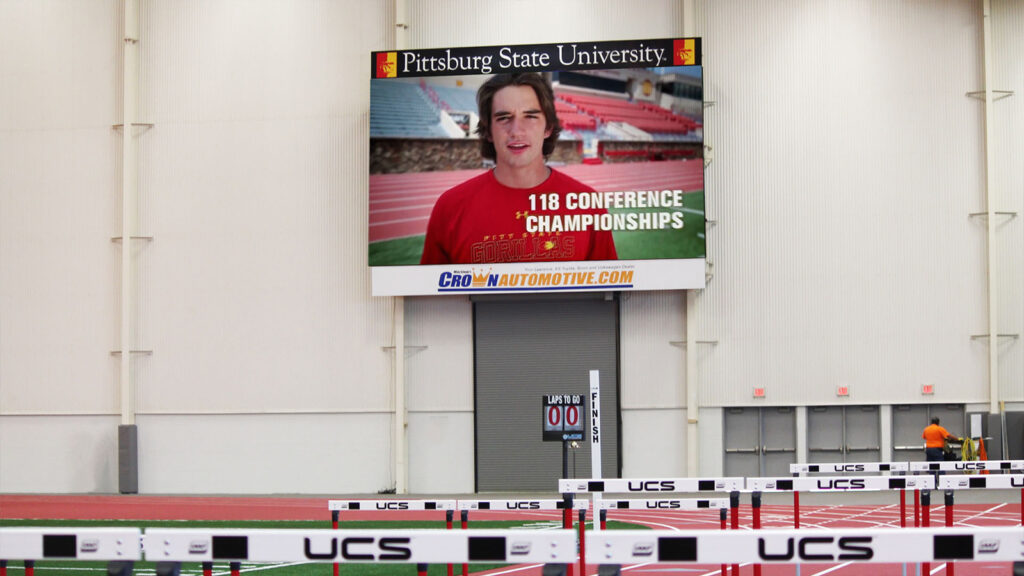
Let’s be honest—waiting on a sign to ship is the fastest way to stall your whole business. You’ve already done the hard part: landed the job, got the artwork approved, maybe even pulled permits. But now you’re stuck. No hardware. No install. No invoice. That’s why fast shipping isn’t just a bonus—it’s a business advantage. When the Sign Doesn’t Ship, Nothing Moves Every dealer has been there. You’ve got your crew scheduled, your customer is excited, and then you find out the sign’s still in production. Or worse—waiting in line to go into production. Here’s what that delay really means: Your crew sits idle or gets reassigned. Your customer starts getting anxious. Your cash is tied up in a project you can’t bill for yet. And just like that, your momentum vanishes. When the Sign Doesn’t Ship, Nothing Moves Every dealer has been there. You’ve got your crew scheduled, your customer is excited, and then you find out the sign’s still in production. Or worse—waiting in line to go into production. Here’s what that delay really means: Your crew sits idle or gets reassigned. Your customer starts getting anxious. Your cash is tied up in a project you can’t bill for yet. And just like that, your momentum vanishes. Why Speed Pays Off When you don’t have to wait 4–6 weeks for a sign, everything gets easier—and more profitable. Here’s how fast shipping translates into better business: Why Speed Pays Off When you don’t have to wait 4–6 weeks for a sign, everything gets easier—and more profitable. Here’s how fast shipping translates into better business: You Get Paid Sooner The faster the sign arrives, the faster you install it—and the sooner you can send the invoice. That shortens your receivables window and gets cash back in your account where it belongs. You Can Book More Jobs Projects don’t pile up when delivery is fast. You can fit more installs into your month, especially when customers have tight timelines or seasonal deadlines. You Earn More Trust When you say “three weeks” and actually deliver in two, customers notice. Fast delivery builds confidence, and that leads to referrals and repeat business. You Reduce the Risk Every day a customer waits is another day they could cancel, change their mind, or start doubting you. Fast shipping keeps the job on track and your relationship solid. Real Results, Real Fast One of our dealers in the Midwest closed a school project on a Monday. They called us the same day to check inventory. We had the size they needed in stock, and it shipped out that Friday. By the following Wednesday, the sign was installed and the invoice was sent. That’s a complete project cycle—in just 10 days. And the best part? The dealer got paid before the month was even over. FAQs About Fast Shipping and Sign Dealer Cash Flow How fast can I get a sign from NEXT? Many models ship within 5 business days. We’ll confirm timing with you before you place the order. Does this really improve my cash flow? Yes—install faster, invoice faster, get paid faster. Less lag, better liquidity. Can I check inventory before I quote a project? Absolutely. Just call or email us, and we’ll let you know what’s in stock and ready to ship. What kind of signs are available for fast shipping? We keep our most requested sizes and full-color outdoor models in inventory. If it’s not custom, there’s a good chance it’s ready to go. What happens if my job falls behind because of shipping delays? You lose time, money, and sometimes even the customer. That’s why working with a supplier who ships fast can keep your business on track. Why Fast Shipping from NEXT Makes a Real Difference When you work with NEXT, you’re not just getting a high-quality LED display—you’re getting a delivery timeline that actually supports your business goals. Faster installs mean faster payments. And when you can move that money sooner, you’re free to take on more work, invest in better tools, and grow without waiting on someone else’s schedule. If you’re tired of holding your breath every time you order a sign, maybe it’s time to work with a supplier who can keep up. Let’s move fast—and get paid faster. Why NEXT Works for Dealers At NEXT LED Signs, we don’t just build signs—we build confidence. We stock our most popular sizes and models so you don’t have to wait for production. Most orders can ship in as little as 5 business days, and we’ll confirm availability before you even quote the job. You’re not guessing. You’re not waiting. You’re just getting it done—and getting paid. Contact us today for your free quote and see how fast you can get your signs!
Why LED Video Walls Outshine Projection Displays in Large Venues
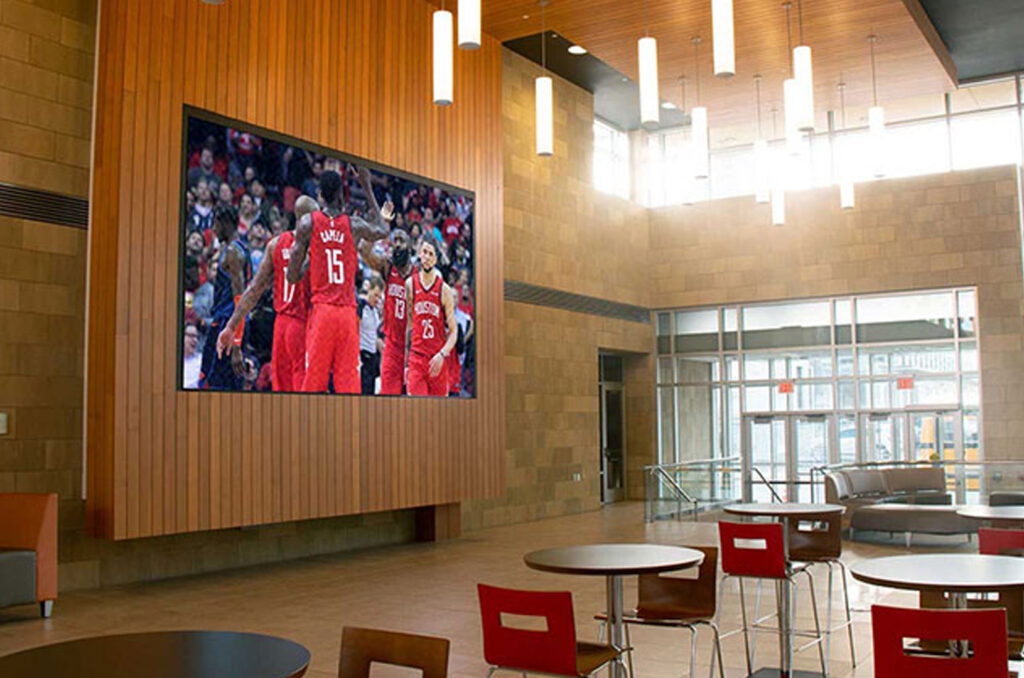
LEDs (Light Emitting Diodes) have skyrocketed in popularity thanks to their energy efficiency, eco-friendliness, affordability, and long lifespan. They’re the backbone of modern digital signage and scoreboards, offering businesses a reliable and impactful way to display information and attract attention.
Among the various types of LEDs, SMD (Surface Mounted Devices) and DIP (Dual Inline Package) LEDs stand out as the most common technologies. While they share the same foundational principles, they bring unique advantages to the table.
Selecting the Best Indoor LED Display for Your Needs

Shopping for an indoor LED display? It can be overwhelming. You’ve got specs, pitch sizes, resolutions, and price tags to compare—and it’s easy to miss the details that really matter. So, what makes one display better than another? The truth is, the best indoor LED display isn’t just about specs. It’s about choosing the right screen for your specific environment, audience, and content. Let’s walk through what you need to know. Start with Your Environment Think about where the display will go. Is it a bright lobby with lots of windows? A retail store with constantly shifting lighting? A control room where staff will be staring at the screen all day? These differences matter. Bright spaces need displays with higher brightness and glare resistance. Close-range viewers require tighter pixel pitch. Open layouts call for wide viewing angles so everyone sees the content clearly. Stat: LED displays provide up to 10× better visibility in high-ambient light environments compared to projection-based setups. What Are You Showing on the Screen? Content drives configuration. Ask yourself: Will you display text alerts or full-screen videos? Do you plan to rotate content daily or update in real-time? Is branding and image quality a top priority? If you’re showing high-resolution images, product visuals, or real-time dashboards, you’ll want a tighter pixel pitch and high refresh rates to prevent flicker or blur. Pro Tip: Displays with a refresh rate of 3,840 Hz or higher deliver smooth playback—even with fast-changing data or animations. Viewing Distance Still Matters Even in indoor settings, viewing distance plays a big role in screen performance. The closer the viewer, the tighter your pixel pitch should be. Here’s a quick rule of thumb: 1mm pixel pitch = ~3 feet of optimal viewing distance So if your viewers will be 6 feet away, aim for a 1.5–2mm pitch. Fact: Properly matched pitch improves message clarity by up to 70%, especially in environments like meeting rooms, retail counters, and event spaces. Ease of Installation and Maintenance Let’s not overlook the practical stuff. The best indoor LED display is the one that fits your space and your infrastructure. Wall-mounted? Suspended? Free-standing? Your mounting method may affect power access, ventilation, or servicing needs. Also, LED panels last longer than LCDs and projectors, with 100,000+ hour lifespans, but make sure the design allows for easy front or rear access when maintenance is needed. Most LED signs come with modular cabinets—if a section ever needs repair, you can swap it without replacing the whole screen. Think Beyond Today Your display should be ready for whatever comes next. Maybe you start with a welcome message and eventually shift to interactive content or real-time data. That’s why many businesses choose scalable, full-color indoor LED systems that adapt over time. Frequently Asked Questions About Choosing Indoor LED Displays Q: What factors determine the best indoor LED display for a space?A: It depends on lighting, viewing distance, content type, and layout. For example, open areas require wide viewing angles, while bright spaces need higher brightness and anti-glare capabilities. Q: How does pixel pitch affect image clarity?A: Smaller pixel pitch means sharper images at closer ranges. When matched properly to the viewer’s distance, displays deliver up to 70% better clarity—especially for text and branding visuals. Q: What makes LED better than projection indoors?A: LED signs offer 10× more brightness, wider viewing angles, and no need for darkened rooms. They’re also easier to scale and maintain over time. Q: How long do indoor LED displays last?A: Most are rated for 100,000 hours of operation, making them a solid long-term investment for businesses that want reliability. Q: Can indoor LED displays be upgraded or expanded later?A: Yes. Modular LED systems can grow with your needs, letting you expand or reconfigure displays as your space or goals change. Why NEXT LED Signs Is the Right Choice for Indoor LED Displays At NEXT LED Signs, we make it easy to choose the right display for your space—not just by selling you a product, but by helping you match it to your goals. We guide you through pitch selection, mounting options, brightness needs, and long-term support planning. Every indoor LED sign we build is designed for real-world environments, whether it’s a bright atrium, a retail display, or an executive boardroom. We don’t just deliver a sign—we deliver a solution that works from day one and evolves with your business. Let us help you extend your reach. With a digital display from NEXT, you can count on a hassle-free experience backed with outstanding warranties and service.
